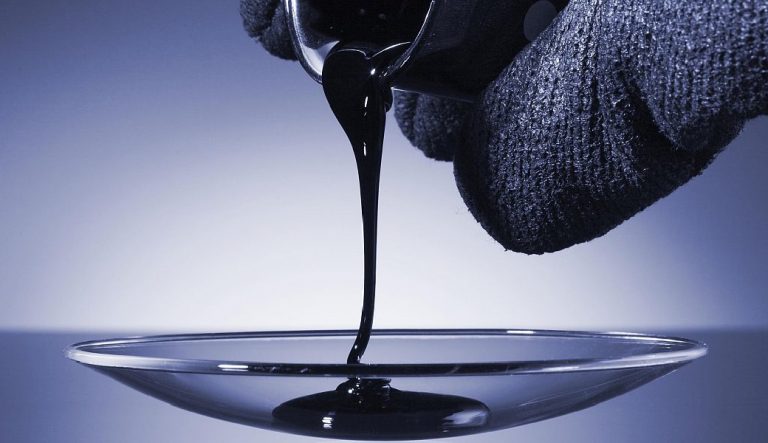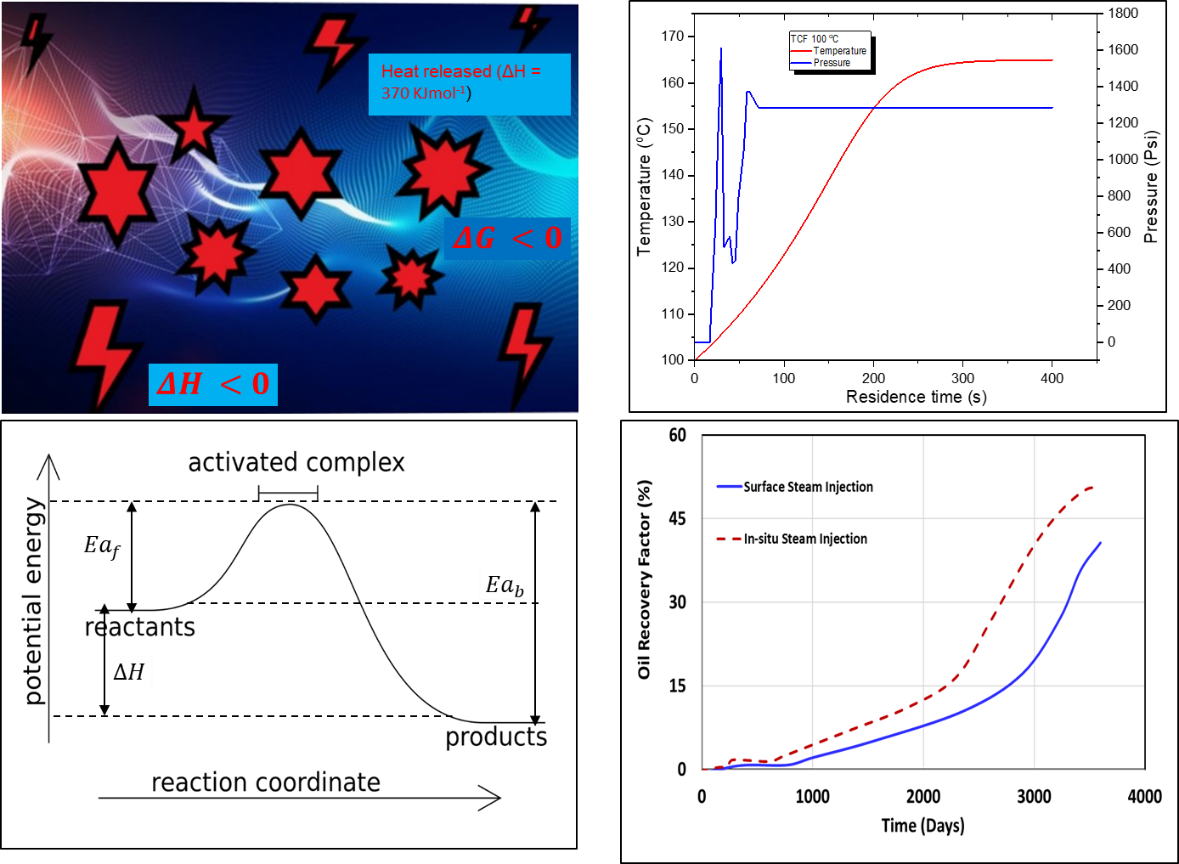Heavy oil has become economically important due to their capacity to supplement the conventional light crude oil supply. However, the intrinsic characteristics of heavy oils including high viscosity between 103 – 106 mPas or greater at the initial reservoir conditions, lower API gravity (20o – 10o API) and high density (≥ 1000 kg/m3) are responsible for difficulties in the recovery and poor production flow (Speight, 2009; Huang et al., 2019).
Generally, the viscosity of hydrocarbons can be reduced significantly by temperature. Thus, heavy oil is most efficiently produced using the thermal methods such as the steam assisted gravity drainage (SAGD), cyclic steam stimulation (CSS), in-situ combustion (ISC), and the variants (Babadagli, 2018). However, many factors including high-energy cost, CO2 emission, inefficient heat transfer due to loss to formation rocks, water requirement and other associated environmental issues (emission of greenhouse gases - GHG) have instigated the need to find more sustainable alternatives.

Recently, an advancement in thermal enhanced oil recovery technology, which primarily concerns insitu heat and nitrogen gas generation through exothermic chemical reactions otherwise knowns as “thermochemical fluid (TCF) injection method” has been proposed (Al-Nakhli et al., 2016, Hassan et al., 2018; Alade et al., 2019). Compared to the conventional steam injection, it offers advantages for lower capital and/or operating costs, higher overall thermal efficiency, and most importantly, environmental friendliness. In addition, it has no limitation with the reservoir depth and can be implemented in cold and hot regions with no safety issues.
With the view to establishing prospective application of this novel technology for heavy oil recovery on commercial scale, a team led by Prof. Patil and co-workers incorporate experimental and numerical simulation approaches considering the synergistic effects of insitu heat and pressure generation. The experimental results obtained from coreflooding have been used to conduct numerical modeling using the thermal enhanced oil recovery simulator – CMG STARS. Essentially, the performance of the proposed technology has been compared with those of the conventional steam injection method based on the recovery factor (RF) and the net present value (NPV). Ultimately, the results confirm superiority of the proposed technology from the recovery and economic standpoint.
Moreover, the output of this effort has been published in the prestigious Energy Conversion and Management Journal, Elsevier (https://doi.org/10.1016/j.enconman.2019.112203). More so, the article has been selected for an award in the initiative of high quality/impact research publication at the King Fahd University of Petroleum & Minerals (KFUPM).

Figure: An overview of thermochemical reaction and TCF injection method
The team at CPG included Prof. Shirish Patil, Dr. Mohamed Mahmoud and Olalekan S. Alade. It also included Dr. Mohamed Hamdy and Dr. Esmail M. A. Mokheimer, members from the Department of Mechanical Engineering, College of Engineering, KFUPM.
References:
- Alade, O.S., Mahmoud, M., Hassan, A., Dhafer, A., Ayman, A., Bataweel, M., 2019. Evaluation of kinetics and Energetics of Thermochemical Fluids for Enhanced Recovery of Heavy Oil and Liquid Condensate. Energy Fuels. DOI: 10.1021/acs.energyfuels.9b00681.
- Al-Nakhli, A.R., Sukkar, L.A., Arukhe, J., Mulhem, A., Mohannad, A., Ayub, M., Arifin, M., 2016. In-Situ Steam Generation A New Technology Application for Heavy Oil Production. SPE Heacy Oil Conference and Exhibition, 6-8 December, Kuwait City, Kuwait. SPE-184118-MS. DOI: https://doi.org/10.2118/184118-MS.
- Babadagli, T., 2018. Heavy oil: in Technology Focus. Journal of Petroleum Technology, 76-80.
- Hassan, A. M., Mahmoud, M. A., Al-Majed, A. A., Elkatatny, S., Al-Nakhli, A.R., Bataweel, M. A., 2018. Novel Technique to Eliminate Gas Condensation in Gas Condensate Reservoirs Using Thermochemical Fluids. Energy Fuels, 32(12): 12843-12850.
- Huang, S., Chen, X., Liu, H., Xia, Y., Jiang, J., Cao, M., Li, A., Yang, M., 2019. Experimental and numerical study of steam-chamber evolution during solvent-enhanced steam flooding in thin heavy-oil reservoirs. Journal of Petroleum Science and Engineering 172, 776-786.
- Speight, J. G. 2009. Enhanced Recovery Methods for Heavy Oil and Tar Sands. Gulf Publishing Company, Houston, Texas.
